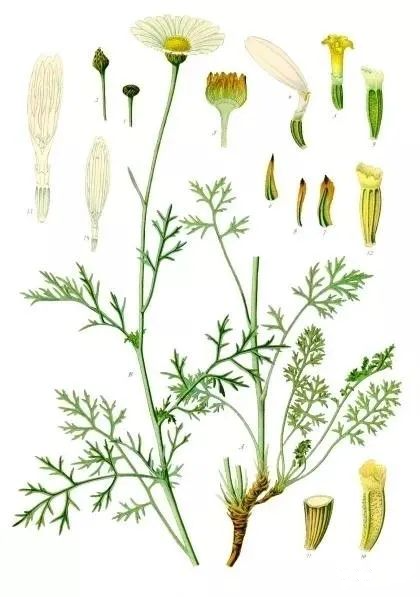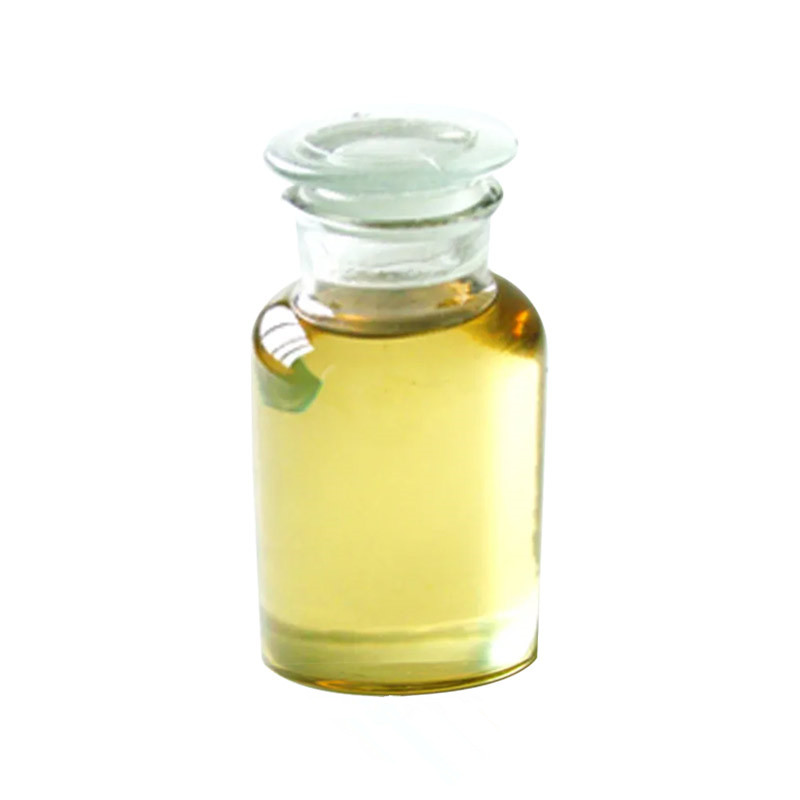Pyrethrin is a plant pesticide extracted from pyrethrin, and its advantages are: rapid decomposition without residue, safety and non-toxic, high efficiency and broad spectrum, and no resistance. Due to the excellent characteristics of pyrethrin, fully in line with the requirements of contemporary society for green, environmental protection and health, it has become a hot spot in the field of ecological pesticides, and is recognized as the most ideal insecticide in the world, widely used in agriculture, storage, health, horticulture and other fields of pest control.

Pyrethrum, a species of Chrysanthemum Chrysanthemum in the family Compositae, is a perennial or two-year herb with the scientific name Pyreyhrum cineriifoliun Trebr. The plant height is 30 ~ 80 cm, the whole plant is gray-green, the green thin taproot is conical, the side root is many, slender and whisky, light brown, the stem is many branches.

Pyrethrin in its flowers contain 0.6-1.3% pyrethrin and grey chrysanthemum, pyrethrin is also known as pyrethrin, is a colorless viscous oily liquid, when mosquitoes contact, it will paralyze, poisoning and death. Pyrethrum can not only kill mosquitoes, but also kill pests in crops and trees and fruit trees. It is known as the "three major plant pesticides" together with tobacco and poison fish rattan.
Pyrethrum originated in Dalmatia, the Balkans, the Alps and other regions of today's Yugoslavia, has been cultivated and used for 150 years, is currently the world's few insecticidal plants that can be intensively planted, the 18th century Persians first discovered the insecticidal ability of red flower pyrethrum. The white flower pyrethrum, found in the Balkans, was later shown to be even more potent. In China, Japan, the United States and many countries in Europe, pyrethrin pesticide is allowed to be used in organic agricultural production, and is the only substance that can be directly used in the food processing industry to eliminate pests, and is praised by the Food and Agriculture Organization of the United Nations (FAO) as the safest plant source insecticide.

Pyrethrin, also known as natural pyrethrin, is a natural pyrethrin extract, which is an active ingredient with insecticidal effect isolated from Pyreyhrum cineriifoliun Trebr. Pyrethrin has insecticidal value, It contains pyrethrin I (pyrethrins I), Pyrethrin II (pyrethrins II), cinerin I (cinerin II), jasmolin I (jasmolin I), and Jasmolin II (Jasmolin I).
It is mainly used for the prevention and control of health pests and livestock pests. It is very safe for humans and animals, no harm to plants, no residue, and does not pollute agricultural products and the environment. Safe for warm-blooded animals. The toxicity to insects was strongest in pyrethrin I, followed by pyrethrin I, followed by pyrethrin II, and the weakest in pyrethrin II. The FAO/WHO recommends an allowable daily intake of 0.04mg/kg body weight (including other pyrethrins). Rats were given 1500mg/kg orally.
The maximum allowable concentration in food: Sweden stipulates 1.0mg/kg for fruits and vegetables (including pyrethrin I); FAO/WHO recommends 3mg/kg for fish (dried), unprocessed cereals and 1mg/kg for dried fruits, dried vegetables, fresh fruits and fresh vegetables, peanuts and stone fruits.
Pyrethrins are widely used in domestic and international markets. In agriculture, pyrethrin is widely used as an insecticide and can be used to control a variety of pests, including mosquitoes, cockroaches, spiders, fleas, aphids and others. Pyrethrin has an efficient, rapid insecticidal effect, and is relatively safe for humans and animals, so it has been widely used in agricultural production.
In addition, pyrethrins are also used in the field of family health and public health. It can be used for indoor and outdoor insecticidal operations, such as spraying indoor insecticides, insect repellents, insecticides, etc. The use of pyrethrin in homes and public places can effectively control various pests and provide a comfortable and hygienic environment.
Pyrethrins have some important chemical properties. It is a fat-soluble compound that is soluble in organic solvents such as alcohols, ethers and ketones. It can also form a suspension in water. Pyrethrins are relatively stable in the air and break down when exposed to ultraviolet light in sunlight. It is sensitive to light and heat, so care needs to be taken to avoid exposure to high temperatures and sunlight during storage and transportation.
The mechanism of pyrethrin poisoning is mainly related to its effect on insect nervous system. The following is a general overview of the mechanism of pyrethrin poisoning:
1. Neurotoxic effects: pyrethrin plays an insecticidal role by acting on the nervous system of insects. It mainly affects the electrical signal transmission of insect nerve cells. Pyrethrin can interfere with the sodium ion channels of insect nerve cells, causing increased excitability of nerve cells, resulting in abnormal electrical signal transmission and nerve conduction block. This leads to dysfunction of the insect's nervous system, eventually leading to paralysis and death.
2. Selectivity of neurotoxic effects: pyrethrin has relatively high selectivity on the nervous system of insects, and has little effect on the nervous system of mammals and humans. This is because insect and mammalian nerve cells have some structural and functional differences, resulting in pyrethrin's effect on the insect nervous system is more obvious, while the effect on the mammalian nervous system is less.
3. Metabolism and detoxification: some pyrethrin will be metabolized in insects and produce some metabolites. These metabolites may have a more toxic effect on the insect's nervous system. However, certain insects may also reduce the toxicity of pyrethrin through a number of detoxification mechanisms. These detoxification mechanisms can include the activation of metabolic enzymes and the ability to exclude pyrethrin.
4. Potential harm: Although pyrethrin has a small impact on the human body and mammals, it may still cause some uncomfortable symptoms under high concentration and long-term exposure, such as eye and skin irritation, respiratory system discomfort, etc. Therefore, when using pyrethrin, it is still necessary to follow the correct use methods and safe operating procedures to avoid excessive exposure.
Pyrethrin acts as an insecticidal agent by interfering with the electrical signal transmission of insect nerve cells. Its effect on the nervous system of insects is relatively selective, and its effect on the nervous system of humans and mammals is less. However, it is still necessary to follow safe operating procedures during use to avoid excessive contact.
Pyrethrin is the dried inflorescence of pyrethrin, containing about 1% pyrethrin. Pyrethrin has the advantages of good insecticidal effect, quick knockdown and low toxicity. In recent years, pyrethroid analogues have been synthesized artificially, which have the advantages of wide insecticidal spectrum, low toxicity to humans and animals, and less environmental residue, so they are called pyrethroids. These insecticides are nerve agents. At present, there are more than 20 kinds of practical products on the market, and China mainly uses deltamethrin, fenvalerate, cypermethrin, permethrin, permethrin, etc., all of which are moderately toxic products with high oral absorption toxicity. This class of insecticides contain pyrethrin synergists (P-450 cytochrome inhibitors). Household insecticides are mixtures of pyrethroids and other ingredients. Pyrethrin is a low-toxicity insecticide, but when combined with other insecticides, such as insecticides, probencsyl, etc., it can significantly increase its toxicity or prolong the half-life of the drug. This class of insecticides is highly toxic by inhalation.
Analysis methods for pyrethrin mainly include the following commonly used methods:

Gas chromatography: 10%NPGS Chromosorb W column, electron capture detector detection at 160℃, can separate the 6 active components of pyrethrin; If 150 ~ 225℃, 2℃/ minute temperature program, hydrogen flame ionization detector detection, the effect is better. Analysis can also be performed with 3-5% SE-30 Chromosrb W column at 190 ° C and column temperature detector at 205 ° C
It should be noted that the selection of the appropriate analytical method should be based on the characteristics of the sample, the purpose of analysis and the availability of instruments and equipment. At the same time, it is also necessary to follow the relevant analysis standards and method verification requirements to ensure the accuracy and reliability of the analysis results.
Matters needing attention
1) Pyrethrum is a strong touch agent, the agent must be in contact with the insect body to be effective, otherwise the effect is not good.
2) Pyrethrin is easy to decompose in light, and the spraying time is best selected in the evening.
3) Pyrethrin can not be mixed with stone sulfur mixture, Bordeaux liquid, rosin mixture and other alkaline pesticides.
4) Commercial preparations should be stored in airtight containers to avoid high temperature, humidity and direct sunlight.
Post time:2024-05-29





